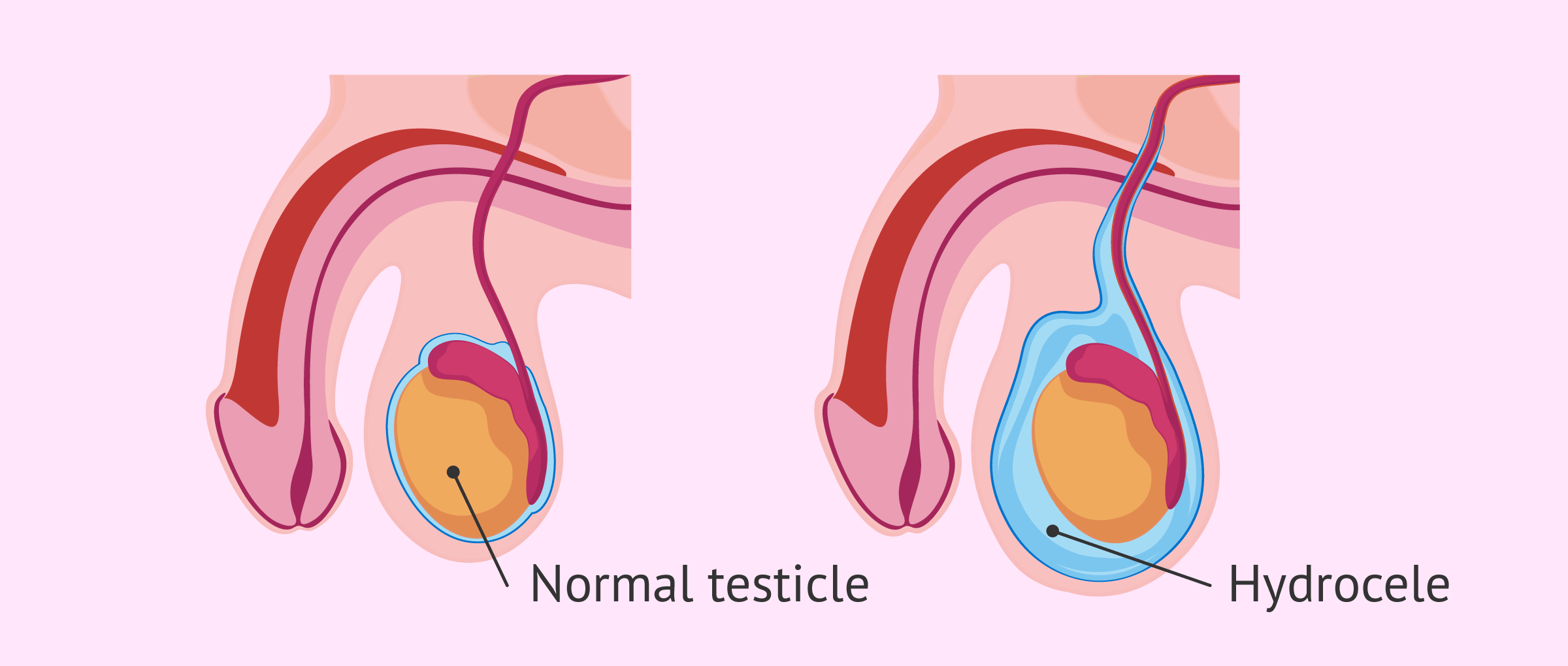
Hydrocele occurs when fluid accumulates in the sac around the testicles, causing it to swell. As a result of hydrocele, the scrotum grows soft and swollen. A hydrocele can be highly uncomfortable as well as embarrassing. Male infants are more likely to suffer from hydrocele than adult males. Most hydroceles disappear on their own within a year without treatment, according to research that suggests about 10% of newborn boys have them.
Types Of Hydrocele
Communicating Hydroceles
Commonly found in male babies, communicating hydroceles can be congenital (present from birth). Communicating hydroceles are those in which fluid flows in and out of the scrotum. As a result, the size of the hydrocele changes over time.
In the 7th month of pregnancy, the male child's testicles descend into the scrotum from his abdomen. A sac surrounds each testicle during development. Fluid is contained within these sacs.
This sac's lining closes on its own under normal circumstances. Within a year after birth, the fluid is absorbed by the body. Occasionally, however, some abnormalities in scrotal development result in the sac not closing. As a result, the lining of the abdomen and scrotum remains open.
The scrotum can be filled with free fluid from the abdomen due to this opening. Fluid can pass through the scrotum and create varying sizes of hydroceles. In the morning and during rest, communicating hydroceles are usually small as intra-abdominal pressure rises, their size increases. A larger hydrocele can be caused by physical activity, coughing, straining, etc.
Non-Communicating Hydroceles
Noncommunicating hydroceles can be congenital or acquired. The lining between the abdomen and scrotum closes off in non-communicating hydroceles. Therefore, the fluid does not flow in and out. The size of the hydrocele does not change throughout the day. As a result, non-communicating hydroceles are more stable than communicating hydroceles.
The fluid around each testicle fills the sac surrounding the testicle during the development of the scrotal region. Usually, this sac closes on its own, and the body absorbs the fluid.
If, however, a non-communicating hydrocele occurs in your baby, the gland closure occurs, but the body cannot absorb the fluid. As a result of this fluid, the scrotum becomes swollen and enlarged. Over time, as more fluid accumulates, the size of the hydrocele increases, but it grows slowly in most cases.
Adults develop non-communicating hydroceles after being injured, inflammatory, or traumatized. As a consequence, the fluid can be produced more or absorbed less. This can lead to a hydrocele.
Treatment
Your doctor may recommend a few treatment options if the hydrocele doesn't disappear on its own. First, we will examine the scrotum to make sure there is no tenderness. As the doctor applies pressure on the abdomen, he will check for hernias. Finally, the doctor may be able to create a light source inside the testicles. A hydrocele is evident if a clear liquid is seen.
The hydrocele will be surgically treated if it does not heal itself. Depending on your medical history and whether the doctor believes you will be knocked out completely, the doctor might decide to give you both general and local anesthesia. Hydrocele is removed by making incisions on the scrotum after anesthesia has been administered. This procedure is not complicated at all.
Hernia patients often develop hydroceles that need to be removed because they weren't noticed. Tubes are usually inserted. As a result, the scrotum is returned to normal size by draining excess fluid. The tube is also usually covered with a bulky dressing in order to prevent infection and keep the tube in place.
If you are suffering from hydrocele and seeking a permanent solution to it, you should contact us.